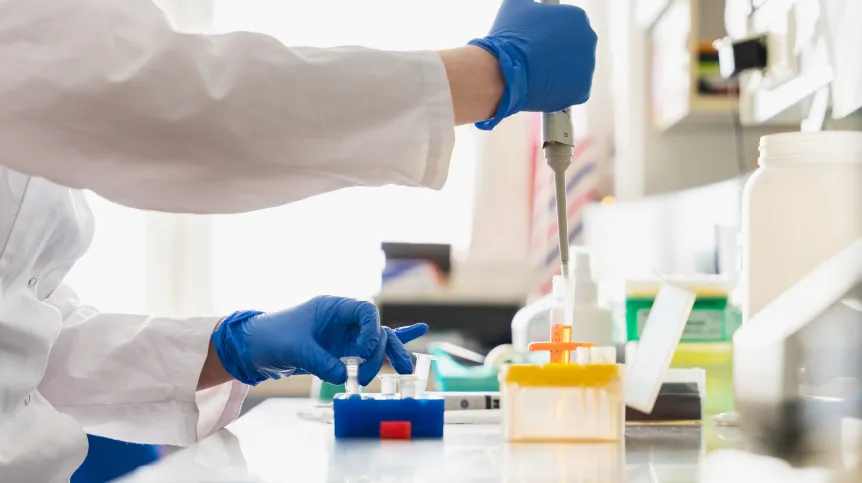
A decade of research at the International Institute of Molecular and Cell Biology has allowed scientists to better understand the mechanisms leading to DNA methylation. In some situations, undesirable methylation leads to myelodysplastic syndrome (MDS) and some leukemias (CMML, AML). Research on DNA methyltransferases was published in the prestigious journal Nucleic Acids Research.
DNA methylation is a way of changing the function of a certain fragment of DNA. It involves a chemical change within DNA, which does not change the genome sequence and is an element of epigenetic regulation of gene expression. Thanks to methylation, cells receive information whether a given gene should be active or not.
Disorders resulting from abnormal DNA methylation are the cause of many diseases, such as myelodysplastic syndrome (MDS), chronic myelomonocytic leukemia (CMML), acute myeloid leukemia (AML) and β-hemoglobinopathies. Treatment of these diseases is possible by blocking unwanted DNA methylation.
The target of potential drugs for these diseases are DNA methyltransferases (DNA MTases). These enzymes catalyse the methylation reaction (addition of a methyl group to nitrogenous bases - cytosine and adenine in DNA). Without these enzymes, methylation does not occur as efficiently as it should.
The paper published in the prestigious Nucleic Acids Research focuses on the fate of cytosine analogues in double-stranded DNA. The authors discuss their initial interaction with DNA methylating enzymes and their final removal. The results of many years of research may contribute to understanding the interactions of these enzymes with compounds used in the treatment of many diseases, including AML and CMML leukemias.
'It took us a long time to put together all elements of the puzzle, but it is extremely rewarding to see the final version of the paper in advanced online form in Nucleic Acids Research', says Honorata Czapińska from the Laboratory of Structural Biology at IIMCB.
'We used a simple prokaryotic M.MpeI methyltransferase as a proxy for the much more complex human DNMT1 enzyme. Some of the cytosine analogues (5-azacytidine and its derivative, 2ʹ-deoxy-5-azacytidine) are already used therapeutically as DNMT1 inhibitors. Our aim was to biochemically and structurally characterize complexes of cytosine derivatives with DNA methyltransferases to understand the fine details of their interaction with the enzymes and their final fate.', she adds.
The results turned out to be much more interesting than the research team originally thought. The researchers discovered that in the presence of small thiol-reducing agents typically used in work with methyltransferases, the compounds containing a halogen atom in the place that should be methylated, inhibit the enzyme but, with time, get modified in the same way as the cytosine substrate.
'Since it was widely believed that the inhibitory complexes with halogenated compounds are covalent and irreversible, it took time to understand and document our findings in a way that convinced the experts reviewing our work. Nonetheless, it was a fascinating journey towards the complete comprehension of the phenomenon', says Marek Wojciechowski from the Plant Breeding and Acclimatization Institute - National Research Institute.
Explaining the molecular mechanisms behind the interaction of cytosine analogues with DNA methyltransferases may lead to finding new ways to prevent disorders with an (epi)genetic causes, such as some diseases of the hematopoietic system.
The researchers emphasize that their work was facilitated by the recent theoretical analysis published early this year in Structure by the head of the team, Professor Matthias Bochtler. A deeper understanding of the differences between cryo-EM electrostatic potential and crystallographic electron density maps helped explain the divergent appearance of halogenated compounds in the two types of maps.
The scientific paper was created as part of a collaboration between scientists from the International Institute of Molecular and Cell Biology in Warsaw, the Plant Breeding and Acclimatization Institute - National Research Institute.in Radzików, the Institute of Biochemistry and Biophysics of the Polish Academy of Sciences in Warsaw, and the Department of Biochemistry of the University of Oxford.
PAP - Science in Poland
lt/ agt/ kap/
tr. RL













